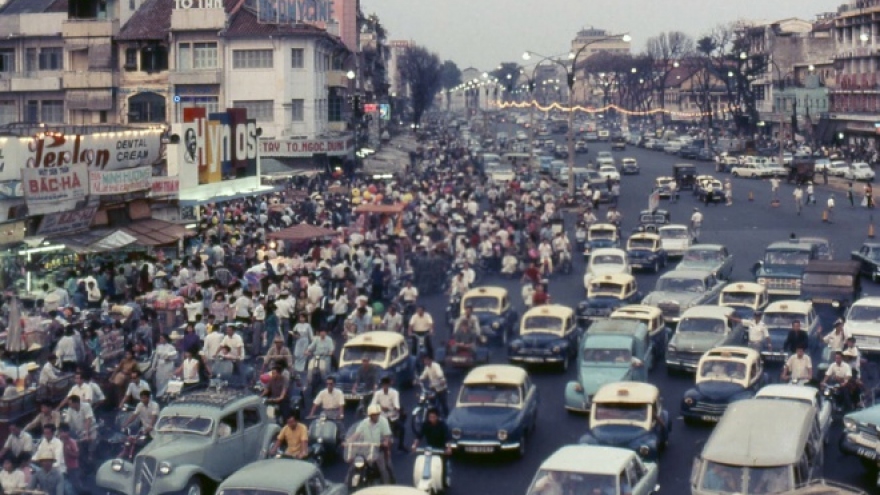Measures taken to tackle traffic jams in Hanoi
The Hanoi police are applying a range of measures to ease traffic congestion in the city as Tet (Lunar New Year) draws near.
 |
The amount of traffic in Hanoi usually increases dramatically two months prior to Tet, the city’s police said. On some days the number of vehicles on the city’s roads increases by 200%, as people travel to the shops in preparation for Lunar New Year.
Traffic congestion can happen anytime, anywhere on the city’s streets, even in early morning on the major routes of Pham Van Dong–Pham Hung, Phap Van–Giai Phong, Au Co–Yen Phu, according to the city’s Department of Transport.
Even though the number of traffic hotspots had reduced from 44 last year to 35 this year, traffic congestion is likely to happen on several other new spots, the department said.
Traffic congestion had even begun to occur on previously clear streets, such as Xa Dan, Hoang Cau, Kim Ma, Tran Phu and the new Kim Lien stretch, even though the police had deployed the maximum number of traffic police officers to direct traffic.
The same situation happened on the streets of Truong Chinh, Chua Boc, Nguyen Luong Bang, Thai Ha, Hoang Hoa Tham despite the addition of 15 allied troops, which consist of traffic police, mobile police and criminal police to ease traffic congestion.
Overloaded traffic infrastructure and low awareness amongst drivers are the two main causes of traffic congestion, according to Ha Huy Quang, deputy director of the city’s police department.
The department had deployed several solutions to improve the situation, he said.
More traffic light systems were added to the routes of Le Duan-Hai Ba Trung and Nga Tu So. Cars were allowed to travel in one-way pairs on the route of Nguyen Huu Tho-Giai Phong.
The Trung Hoa tunnel and the flyover on the route of Hoang Minh Giam-Nguyen Chinh were fixed, and the Le Trong Tan stretch in Thanh Xuan District was completed and open for public use.
Some 2,600 more coaches will be utilised as the number of passengers is expected to increase by as much as 60% on January 24-26 next year, according to the transport department.
The department sent official documents and requested transport agencies to remind drivers to strictly follow regulations on traffic safety. Inspectors from the department will collaborate with the traffic police to direct traffic in the areas around coach stations.
Deputy Transport Minister Le Dinh Tho said that members of the Hanoi Traffic Safety Committee should increase supervision on fake coaches and coach stations. An inspection team, consisting of inspectors from the city’s transport department and the transport ministry, should be formed to handle the scams, he said.
Tran Huu Minh, deputy chief of the National Traffic Safety Committee said that a fee should be applied to vehicles coming from the outskirts to the city’s central areas in order to limit the number of vehicles traveling in the city.
Such a fee will be used to reinvest in other forms of transport such as non-motorised transport, public transport and walking streets, he said.
Nguyen Van Tong, deputy head of the city’s traffic police office said that as temporary solutions, the transport ministry and the city’s People’s Committee should urge the completion of transport construction in the city’s central areas such as the railway that connects the Nhon area with the Hanoi Railway Station, and the Cat Linh-Ha Dong route.
The city’s People’s Committee assigned the transport department to develop more effective solutions for long-term prevention of traffic congestion in the city. Some of the solutions include managing the growth rate of personal vehicles and applying intelligent transport systems.

